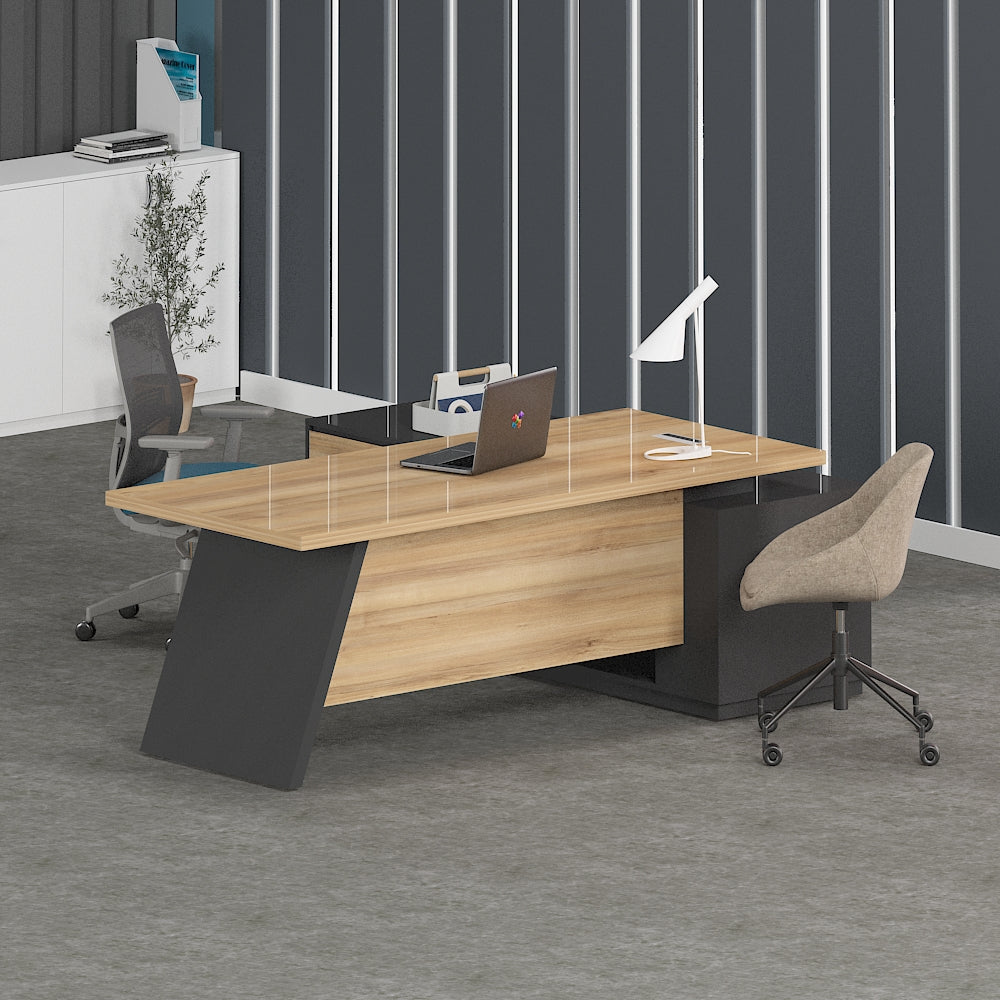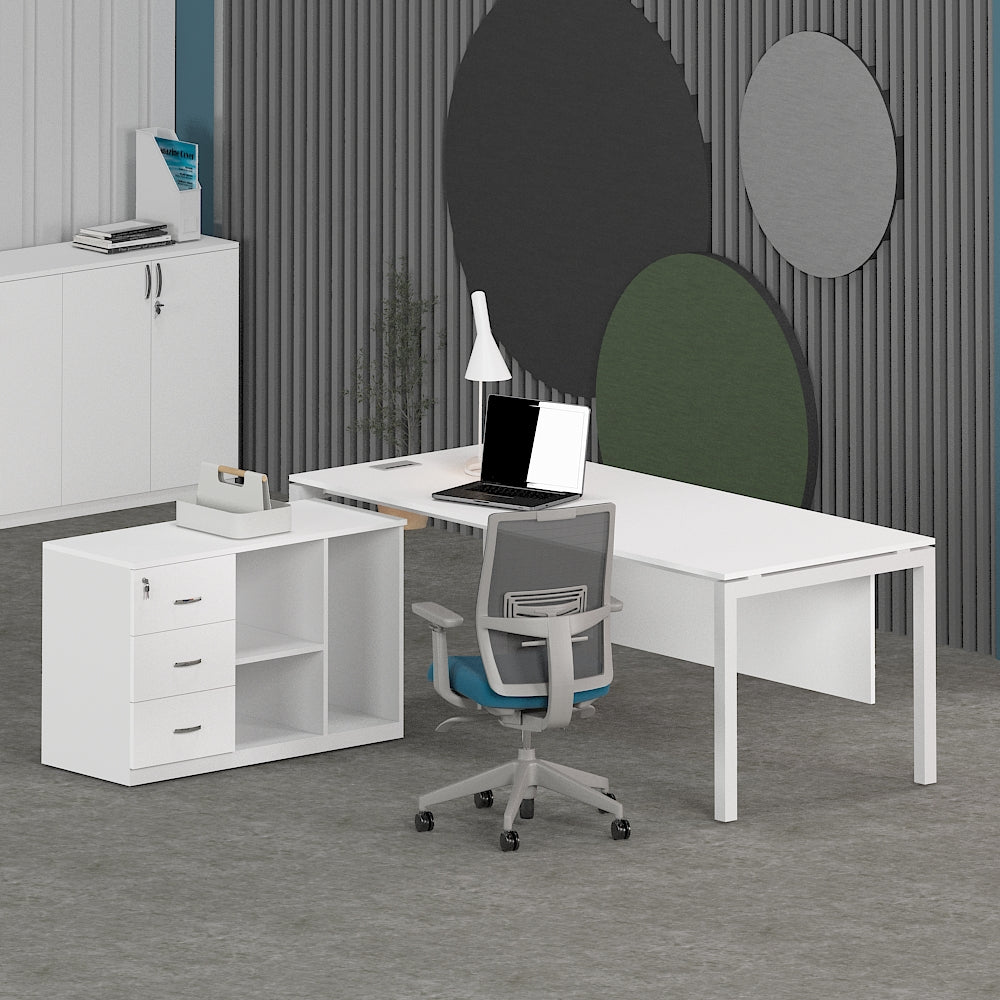The design of executive desks has evolved notably over the decades, reflecting transformations in work culture, technology, and stylistic choices. From the heritage mahogany desks of the yesteryear to contemporary minimalist styles, each design iteration tells a tale about the priorities and principles of its time. As workplaces continue to transform to new needs and waves, the office leadership table has turned into not just a useful piece of furniture but a statement of business acumen and design elegance.
In this study of executive desk designs, we will explore various aspects such as office executive table sizes, substances like wood and transparent surfaces, and the increasing need for versatile designs. Additionally, we will review price patterns in different regions, including the Nigerian market, the Filipino market, East Africa, and South Asia, as well as popular brands like Herman Miller. Whether you are looking for an L-shaped executive table or a complete office set with add-ons, comprehending the progression of these designs can aid you make an educated decision that boosts both the aesthetics and practicality of your office environment.
Historical Summary of Executive Desk Styles
The evolution of executive desk designs can be traced back to the grand wooden tables of the eighteenth and nineteenth centuries, which often featured detailed carvings and luxurious finishes. These desks were not only functional but also acted as a status symbol, reflecting the affluence and power of the person occupying the office. They were commonly large, robust, and made from solid hardwoods, highlighting durability and craftsmanship in a time when the industrial revolution was just beginning to impact furniture production.
As the twentieth century drew near, executive desk designs began to evolve to suit modern office environments and changing work habits. The introduction of materials like metal and glass enabled sleeker, more minimalist designs that aligned with the tastes of a rapidly industrializing society. Desks became more functional, focusing on practicality while still offering an air of professionalism. Modular designs began to gain traction, enabling customization based on individual needs, promoting flexibility in business settings.
In recent decades, the rise of technology and remote work has also transformed managerial desk styles. Today’s desks typically incorporate built-in cable management, adjustable heights, and integrated tech features, all conducive to a dynamic work environment. Additionally, ergonomic considerations have turned into paramount, with many designs offering specialized configurations such as L-shaped desks or standing options. This evolution reflects a shift towards creating more productive, comfortable, and aesthetically pleasing office atmospheres that meet the varied needs of modern executives.
Common Resources and Designs
The decision of substances for corporate office tables has considerably evolved over the time. Conventional wood continues to be a popular choice due to its longevity and everlasting appeal. Multiple wood species, such as oak, birch, and mahogany, provide different textures and patterns, infusing character to office areas. In current designs, engineered wood and veneer have grown in interest for their budget-friendliness and usability, delivering a refined look while being simple to care for.
Steel has emerged as a formidable competitor in current executive furniture styles, frequently used in conjunction with wood or glass. Steel and metal frames are favored for their robustness and sleek appearance, fitting well in simple and factory-inspired offices. The inclusion of glass tops brings sophistication and a sense of transparency, enabling better brightness movement in the workspace while retaining an expensive-looking look.
Forms of executive furniture vary widely, spanning from traditional styles that display intricate details and rich textures to modern styles defined by clean lines and a more subtle appearance. L-shaped and U-shaped styles are also popular for their expansiveness, catering those who demand additional surface area for collaboration and teamwork. As fashions keep to evolve, the fusion of various materials and designs offers endless opportunities for developing practical yet trendy executive offices.

Cost Trends and Industry Analysis
In the past few years, the pricing of executive office tables has shown notable variability influenced by factors such as materials, design complexity, and brand image. For instance, wooden executive tables remain popular due to their classic aesthetic and durability, often commanding prices that represent the standard of craftsmanship. In markets like Nigeria, the price range for an executive office table can vary significantly, making it essential for buyers to grasp the local market dynamics when making a purchase.
The rise of modern design trends has led to the introduction of new materials like glass and metal, transforming the pricing landscape. Executive office tables with glass tops tend to be priced at a higher price point due to the assumed upscale appearance and modern appeal they offer. In comparison, traditional wooden tables may offer a range of prices based on size and design features, including those from reputable brands like Godrej, which maintain a solid presence in the market.
As preferences shift, market data suggest an growing demand for multifunctional executive office tables, particularly those that feature features such as storage solutions and adjustable components. This shift has encouraged manufacturers to create, offering a wider range of products at competitive prices. In regions like the Philippines and Kenyan market, understanding the local requirements and accessory choices can also serve a key role in influencing the overall investment for an executive office setup.
Recent Advancements in Executive Desk Designs

Contemporary executive desks are integrating technology in innovative ways. With the rise of remote work and hybrid office models, desks are now being designed with built-in power outlets, USB ports, and wireless charging pads to meet the needs of the tech-savvy professional. Not only does this boost productivity, but it also streamlines the workspace, eliminating the clutter of conventional wiring. These improvements create a smooth connection between work and technology, making it easier for executives to manage their tasks productively.
Eco-friendliness is another key focus in the evolution of executive desk designs. Manufacturers are increasingly using eco-friendly materials and processes in their production, from reclaimed wood to low-VOC finishes. This trend not only appeals to environmentally conscious consumers but also correlates with the broader movement towards corporate sustainability. As more companies realize the importance of their environmental impact, the demand for furniture that shows these values continues to grow, resulting in chic and sustainable office solutions.

User comfort is a central theme in contemporary executive desks, with many designs emphasizing the health and well-being of users. Adjustable desks that allow for both sitting and standing options are becoming typical in many workplaces. These desks promote optimal posture, reduce fatigue, and enhance focus. Alongside executive table for office price in shape and material, ergonomic considerations are changing how executive offices are furnished, ensuring that spaces are not only aesthetically pleasing but also supportive of a healthy work environment.
